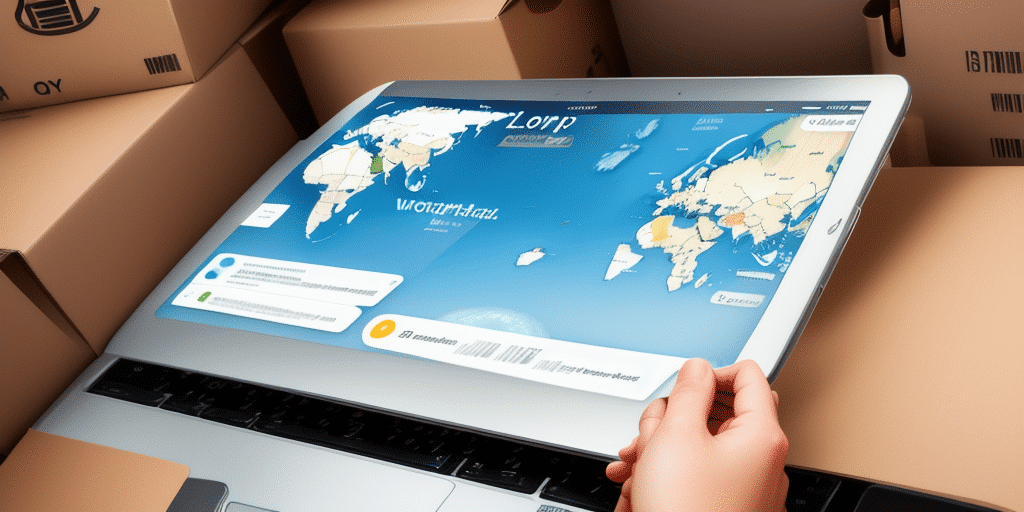How to Backup UPS WorldShip Data: An SEO-Optimized Step-by-Step Guide
In today's rapidly evolving technological landscape, safeguarding your valuable data is paramount. For businesses that depend on UPS WorldShip for their shipping operations, preparing for unexpected data loss or disasters is essential. This comprehensive guide delves into the importance of backing up WorldShip data, identifies the critical types of data to secure, and provides a detailed walkthrough on utilizing the Backup and Restore feature effectively.
Importance of Backing Up UPS WorldShip Data
UPS WorldShip is a critical tool for many businesses, facilitating efficient shipping and tracking operations. Losing WorldShip data can result in severe disruptions, including the loss of customer contact information, shipment tracking details, and comprehensive shipping histories. According to a 2023 IBM report, data breaches and losses can cost businesses an average of $4.35 million, underscoring the necessity of robust data backup strategies.
Moreover, regular backups can lead to significant time and cost savings. Without backups, businesses might spend countless hours re-entering lost data, which can drain resources and lead to financial discrepancies due to billing or shipping errors.
Compliance with legal and regulatory standards is another critical aspect. Various industries mandate the retention of specific records for predetermined periods. Failure to maintain these records can result in hefty fines and legal repercussions. Regular backups ensure that your business remains compliant and mitigates the risk of non-compliance penalties.
Understanding the Types of WorldShip Data
Installation Data
Installation data encompasses all the information related to the WorldShip application itself. This includes application files, database schemas, and configuration settings. Typically, installation data remains relatively static and only needs to be backed up once unless significant changes or updates are made to the software.
Transaction Data
Transaction data includes all the shipping and tracking information entered into WorldShip. This data is dynamic and critical for maintaining accurate shipping histories and customer records. Regular backups of transaction data are imperative to ensure that all shipping activities are securely stored and can be restored in case of data loss.
Storage Recommendations
Store your WorldShip backups in secure locations such as external hard drives or reputable cloud storage services like Amazon S3 or Azure Blob Storage. These platforms offer robust security features, including encryption and access controls, to protect your data from unauthorized access and physical threats.
Preparing for a WorldShip Data Backup
Assessing Storage Requirements
Before initiating the backup process, evaluate the storage capacity required to accommodate your data. Utilize tools or consult UPS WorldShip documentation to estimate the size of your data sets.
System Maintenance
Perform a comprehensive virus scan to eliminate any malware that could compromise your data. Additionally, ensure that all hardware components, such as hard drives and network connections, and software components, including the operating system and WorldShip application, are functioning correctly.
Minimizing Interruptions
To prevent disruptions during the backup process, consider scheduling backups during off-peak hours. Avoid using the computer for other intensive tasks to ensure the backup completes without errors.
Step-by-Step Backup Process Using WorldShip
Step 1: Accessing the Backup and Restore Feature
Begin by launching the WorldShip application. Navigate to the Utilities tab located in the top menu. From the dropdown, select Backup/Restore, then choose Backup WorldShip Data to initiate the backup process.
Step 2: Selecting Files to Backup
In the Backup WorldShip Data window, you'll see options to select the types of data you wish to back up. Check the boxes next to Installation Data and/or Transaction Data based on your needs. Additionally, you can include any necessary third-party files essential for a complete backup.
Step 3: Choosing the Backup Location
Select a secure and accessible location for your backup files. Options include local folders, external hard drives, network drives, or cloud-based services such as Dropbox or Google Drive. Ensure that the chosen location offers adequate security measures, especially if backing up sensitive information.
Step 4: Scheduling Automatic Backups
To maintain up-to-date backups, schedule automatic backups by clicking the Schedule Automatic Backups button. Choose the frequency (daily or weekly) and the specific time to perform the backups. Automation minimizes the risk of human error and ensures consistent data protection.
Restoring Backed-Up WorldShip Data
Manual Restoration Process
In the event of data loss, accessing the Backup/Restore feature allows you to restore your data. Select Restore WorldShip Data and choose the appropriate backup file. Specify the files you wish to restore and initiate the process. Be aware that restoring data will overwrite existing information, so it's advisable to back up current data before proceeding.
Restoring to a New System
If setting up WorldShip on a new computer, ensure that all settings, such as printer configurations and carrier accounts, are updated post-restoration to match the new environment.
Troubleshooting Common Backup Issues
Insufficient Storage Space
Running out of storage space can halt the backup process. Before initiating a backup, verify that the selected storage destination has ample free space to accommodate the data.
Incorrect File Selection
Selecting the wrong files can lead to incomplete backups or data corruption. Carefully review your selections to ensure all necessary data is included.
Process Interruptions
Unexpected interruptions, such as power outages or system crashes, can result in incomplete backups. To mitigate this, schedule backups during stable periods and minimize system usage during the process.
Best Practices for Backing Up UPS WorldShip Data
- Regular Backups: Implement a consistent backup schedule to ensure data is current.
- Secure Storage: Use encrypted external drives or reputable cloud services to store backups securely.
- Verify Backups: Periodically perform test restorations to confirm the integrity and usability of backup files.
- Multiple Backup Locations: Maintain backups in various locations to protect against localized disasters or theft.
- Automate the Process: Utilize automation tools to reduce the risk of human error and ensure backups are performed consistently.
Additionally, consider adopting a 3-2-1 backup strategy: keep three copies of your data, store two on different media, and keep one copy offsite.
Conclusion: Ensuring the Safety and Continuity of Your UPS WorldShip Data
Backing up your UPS WorldShip data is a critical component of your business's data management strategy. This guide has outlined the importance of regular backups, identified the types of data to secure, and provided a detailed process for performing backups and restorations using WorldShip's built-in features. By adhering to these best practices and leveraging reputable storage solutions, you can safeguard your shipping data against unforeseen events, ensuring business continuity and compliance with industry regulations.
Remember to stay informed about the latest updates and features in UPS WorldShip by regularly consulting the UPS Help Center and considering periodic reviews of your backup strategies to adapt to any changes in your business operations or technological advancements.






















